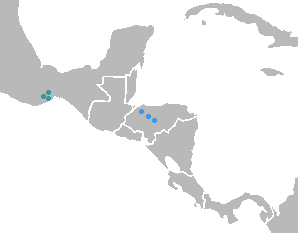| Tequistlatec | |
|---|---|
| Chontal | |
| Geographic distribution | Oaxaca |
Native speakers | 5,600 (not counting 1,700 speakers of unidentified "Chontal") (2020 census) [1] |
| Linguistic classification | Hokan ?
|
| Subdivisions |
|
| Language codes | |
| Glottolog | tequ1244 |
 The Tequistlatecan languages are in Mexico at the left of the map. | |
The Tequistlatecan languages, also called Chontal, are three close but distinct languages spoken or once spoken by the Chontal people of Oaxaca State, Mexico.
Contents
Chontal was spoken by 6,000 or so people in 2020. [1]